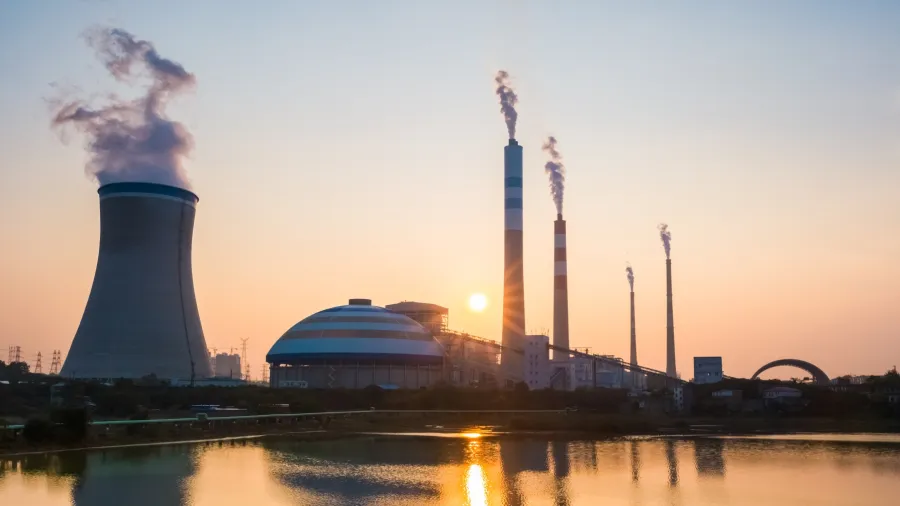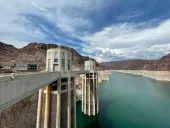
Southeast Asia at the forefront of coal phase-out in power plants
Amidst the challenges of eliminating coal in the region’s energy mix, ASEAN Taxonomy Board paves way for sustainable financing for phase-out.
In March this year, the Association of Southeast Asian Nations Taxonomy Board (ATB) issued an expanded regional taxonomy for the energy sector that included a set of criteria for sustainable financing to phase out the use of coal in power plants.
Considered a global first, the ASEAN’s move is deemed as a critical first step towards meeting the region’s climate goals.
But at what cost does this come, exactly?
Financing coal phase-outs
Coming out with the expanded ASEAN Taxonomy for Sustainable Finance, the ATB had developed a set of criteria that took into account coal-fired power plants’ emissions intensity, absolute emissions reductions, and the reduction in the period of operations.
The ATB also identified the power plants in three categories: Tier 1 (Green or T1), Tier 2 (Amber, T2), and Tier 3 (Amber, T3). These are based on the target timeline for coal phase-out, construction date, and technologies adopted, amongst others.
“Given the benefits of reducing emissions from coal power generation in a managed phase-out and the need for the ASEAN Taxonomy to respond to the diverse ASEAN member states’ circumstances to facilitate an orderly and just transition, the ATB has developed technical screening criteria for coal phase-out,” Noorrafidah Sulaiman, ATB chairperson, said of the science-based, inclusive method of classifying activities according to their contribution to the environment in the region.
She noted that as the inclusion of coal phase-out is novel, it can provide a powerful tool for the transition when executed correctly. The aim is to “promote inclusivity without compromising credibility and interoperability,” she added.
It could also advance dialogue within the international community for effective implementation.
“Having coal phase-out is a very important step towards meeting our climate goals, knowing the climate vulnerability that the region has,” Dr. Victor Nian, co-founder and CEO of the Centre for Strategic Energy and Resources, an independent think tank with a global headquarters in Singapore, told Asian Power.
“But of course, it also has its implications because of our heavy dependence on it. That means we must find a viable solution to get ourselves out of coal,” Nian said.
He noted Southeast Asia will particularly benefit from coal phase-outs, considering the region’s vulnerability to sea level rises. The ASEAN Taxonomy steers the region in the direction where there is a viable option for investments in the coal supply and value chain.
However, Nian concedes that the move, while admirable, falls short of tackling social and economic issues, resulting from coal phase-outs.
Southeast Asia’s dependence on coal energy goes beyond its abundance in the region and its stability as a power source, he said.
Coal power represents a multi-billion industry for Southeast Asian countries, such as Indonesia, Malaysia, and Vietnam. It also employs hundreds of thousands of workers across the supply chain.
On top of this, Nian noted that current geopolitical tensions have driven markets back to coal for energy security.
Socio-economic implications
“From an economic and social point of view, these people will be the first ones that will be impacted, if we have a drastic coal phase-out,” Nian said, adding that this will likely lead to a rippling effect that could also jeopardise jobs in the mining and transportation side amongst others.
“Coal is really the most abundant and reasonable energy resource in the region, and we have really been capitalising on coal to develop our economy. With Southeast Asia countries, and with most of us being developing countries, economic development will still be the first priority,” he stressed.
Nian said that as the Taxonomy is not designed to address these concerns, this will call for governments to come up with measures that will make the transition more sustainable on the socio-economic aspect.
This is not to say, however, that the ATB cannot expand the Taxonomy anew to cover other solutions outside coal phase-outs “as soon as possible.”
“[The] ASEAN Taxonomy now needs to accelerate and look at all the options. We’re at the stage of coal phase-out, which will still need more clarity as to what that means and how we do that, but we still need to look at options and measures that need to be codified and come into the Taxonomy,” Nian said.
These transitional measures include nuclear energy, which some countries have already started exploring. The list of options includes carbon capture, utilisation, and sequestration (CCUS). Nian added that these measures have already been considered relevant and economically viable in the region, but their inclusion in the Taxonomy remains to be seen.
He cautioned that phasing out coal in the absence of these measures could have implications on energy security, and economic competitiveness as these could leave markets resorting to renewables deployment and other options which are likely more costly, depending on the existing grid infrastructure and energy storage availability within the markets.
“In Southeast Asia, this can be quite a difficult situation for us to be in if coal-fired power plants can no longer be financed. But of course, this is an opportunity to rethink or reshape our future sustainable development plans — gradually moving out of coal, whilst looking at how we can leverage the Taxonomy in charting our way in the energy transition,” he said.
Southeast Asia challenge
In its current form, the Taxonomy allows financing for cleaner coal-fired power plants. Nian said this could give countries the opportunity to finance the last coal-fired power plants in their pipeline.
“Surely, there will be other countries, looking at building new coal-fired power plants, supporting alignment with the Taxonomy,” he said, noting that there are existing technologies for cleaner deployment of coal, such as ultra supercritical coal-fired power plants.
“The question is how to finance them,” Nian said. “With the Taxonomy, it gives them an excuse to finance these projects. That’s how I see a danger because, with this Taxonomy, we run the risk of increasing the regional emission, rather than reducing it.”
Without green financing, coal-fired power plant projects can still get funding, but this is increasingly becoming difficult as more financial institutions commit to coal divestment.
In a report, the Institute for Energy Economics and Financial Analysis (IEEFA) found that over 200 financial institutions around the globe have established coal exclusion policies.
Europe recorded the most number of financial institutions divesting from coal, but Asia is expected to show a significant increase to 41 financial institutions in the next three years from only 10 between 2013 and 2019.
Besides this, the ASEAN Taxonomy is also facing challenges within the Southeast Asian economies as some governments resist its provisions. After all, the Taxonomy serves only as a tool for transition and thereby holds no mandating power.
“[The] ASEAN Taxonomy is not progressing very fast because there is resistance from different countries to include some of these options,” Nian pointed out.
In this light, countries will need to have a “strong buy into the Taxonomy” and recognise that coal will need to be phased out, followed by other fossil fuel-fired power, he said.
The challenge now to Southeast Asian countries is to come up with their own “viable and credible regulatory framework” guided by the ASEAN Taxonomy and keep it transparent and enforceable.



















 Advertise
Advertise






